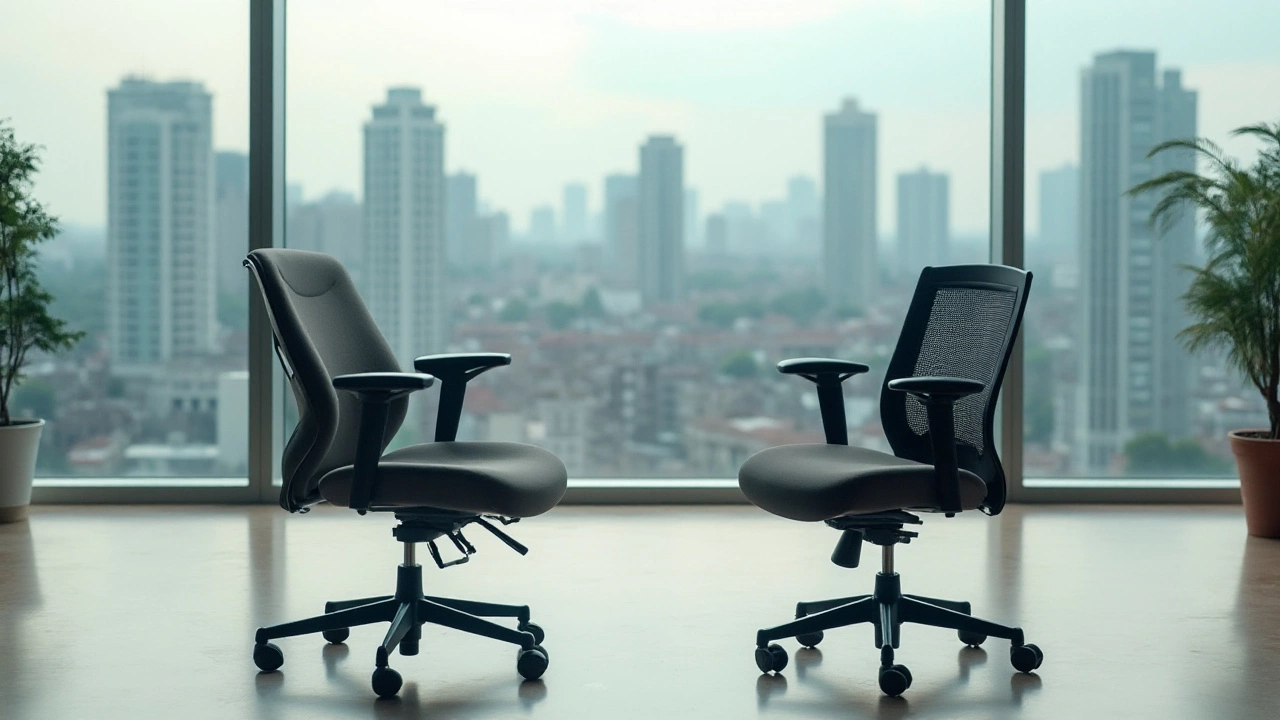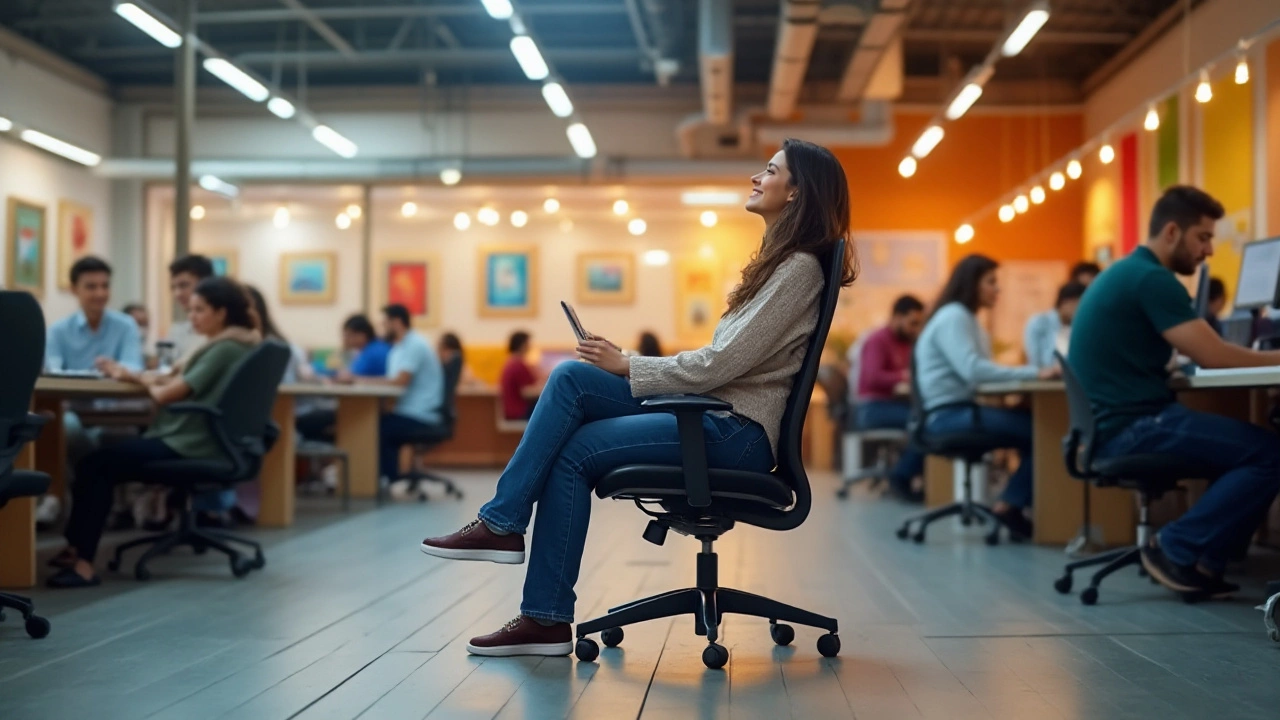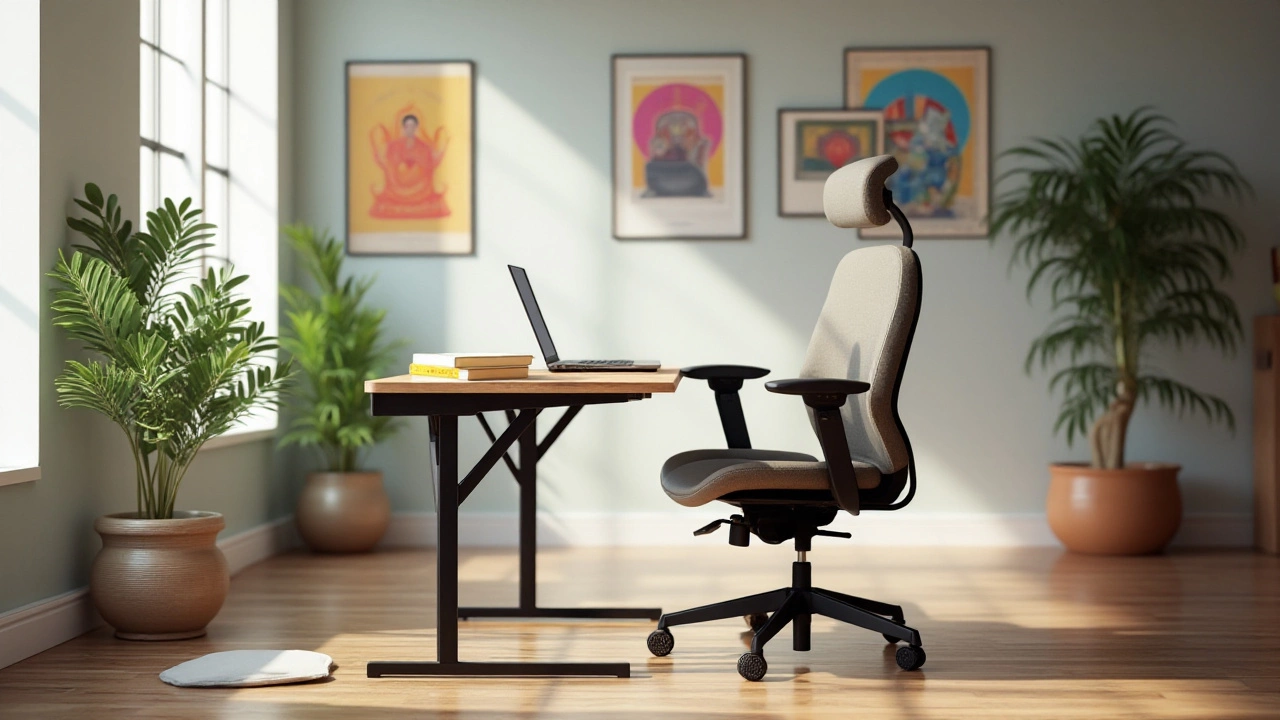The seating you choose for your workspace can significantly impact not just your comfort, but also your productivity and health. While the terms 'office chair' and 'desk chair' are often thrown around interchangeably, they cater to different needs and preferences. Distinguishing between these two types of chairs can help you create a more efficient and comfortable work environment.
Office chairs are generally built with ergonomics at the forefront, ensuring that long hours spent in front of a computer don't take a toll on your body. These chairs often boast adjustable features, aimed at providing optimal support. On the other hand, desk chairs may lean towards simplicity and are often selected for lighter use or shorter durations.
Before investing in a chair, understanding the nuances of each type will offer you insights into how to enhance your work experience. Dive into the world of office seating and discover what truly sets these chairs apart.
- Defining Office and Desk Chairs
- Comfort and Ergonomics
- Design and Versatility
- Tips for Choosing the Right Chair
Defining Office and Desk Chairs
When you step into a workspace, one of the most crucial elements you'll encounter is the seating arrangement. The subtle nuances between an office chair and a desk chair can profoundly influence your comfort and efficiency. Although they might seem like mere synonyms, these two objects are designed with different purposes in mind. Office chairs epitomize ergonomic sophistication, complete with adjustable features to accommodate the user’s physical contours. From lumbar support to seat height and armrest adaptability, these chairs cater to those who spend extended hours at their desks. Designed to be an ally against the physical strains of prolonged sitting, they are a staple in professional environments where productivity and comfort go hand in hand.
In contrast, desk chairs often serve a more basic function, with fewer adjustments and a more straightforward design. These chairs are frequently chosen for environments where users might not spend an entire day glued to their desks. Consider them optimal for home offices or settings where style might take precedence over prolonged seating comfort. Desk chairs may prioritize aesthetics or cost over ergonomic features, opting for a minimalistic approach where the essence lies in simplicity and ease of use. This distinction between the two becomes even more apparent when one examines the variety of innovations integrated into office chairs to enhance seating health.
The term 'ergonomic' attached to office chairs is not just buzzword flair but is a testament to years of research and design evolution. As noted by Dr. Mark Roget, a leading expert in occupational health,
"A well-designed office chair supports the natural curve of the spine, helps the body maintain a good posture, and reduces the risk of back pain."Such quotes underscore the pivotal role of office chairs in fostering a healthy working environment. They are often upholstered in durable fabrics, with mechanisms allowing for dynamic adjustments so users can tailor their experience to fit their unique body shapes and work styles.
Intriguingly, a study by The Ergonomics Society found that workplaces investing in office chairs saw a 17% increase in productivity, highlighting the tangible benefits of choosing the right seating solution. A glimpse into their design features often shows padded seats, adjustable recline tension, and the sophisticated tilt-lock mechanisms that provide customized support to users.
Yet, it’s essential to understand that while office chairs are replete with features designed for comfort and support, desk chairs offer an alternative where function sometimes meets a tighter budget or space constraint. Hence, assessing one’s specific needs, budget, and expected usage can serve as the guiding star in navigating this key choice. Whether leaning towards the simplicity of a desk chair or the adaptability of an office chair, understanding these differences equips consumers with the knowledge to invest in chairs that best suit their needs.

Comfort and Ergonomics
Ensuring comfort and maintaining proper ergonomics in the workplace are pivotal aspects to consider when selecting between an office chair and a desk chair. The distinction lies in the details and the science integrated into the design of these chairs. Office chairs, primarily crafted for extended hours of continuous use, often incorporate ergonomic elements such as lumbar support, adjustable armrests, and a high backrest to support the spine and neck. The significance of lumbar support cannot be overstated as it helps in maintaining the natural curve of the spine, thereby reducing the risk of back pain often associated with prolonged sitting.
High-end office chairs often boast features like seat depth adjustment, which allows individuals to adjust the seat surface to their leg length, ensuring that circulation is not compromised. These features resonate with the principles of ergonomics, which aim to enhance efficiency and comfort. In contrast, a desk chair might be more streamlined, focusing less on adaptability and more on offering a straightforward solution for shorter stints of seating. It may lack the extensive adjustability, making it better suited for brief desk tasks or quick seating needs rather than lengthy workstation endeavors.
An intriguing insight from the Human Factors and Ergonomics Society suggests that ergonomic chairs can significantly decrease spine discomfort and enhance productivity. This aligns with the notion that investing in a quality office chair with customizable settings can be beneficial. As per a 2022 report, ergonomic seating solutions have also been linked with increased work satisfaction, highlighting the psychological benefits of physical comfort.
For someone grappling with the 'chronic sitter’s dilemma,' where long hours at a desk are normal, choosing an office chair with ergonomic features could be a game-changer. These chairs foster posture correction, encourage micro-movements, and support the natural alignment of the body. It’s this personalized fit and responsive design for which many opt to choose the flexibility of adjustable chairs over the simpler desk chair. Some chairs come equipped with advanced technology to adapt to individual movements, maintaining ergonomic support without manual adjustments.
When selecting the right chair, consider how your lifestyle aligns with the chair's ergonomics. For instance, if leaning towards a more sedentary work environment, a chair offering dynamic lumbar support may enforce proper posture and relieve spinal pressure. The office chair often wins the day in comprehensive seating comfort, but desk chairs, with their no-fuss design and simplicity, serve their purpose exceptionally in shorter engagement scenarios. Ultimately, whether it’s the intricate design of an office chair or a simplistic desk chair, assessing your needs and understanding ergonomic principles will guide you toward the best decision for your well-being and work efficiency.

Design and Versatility
The design and versatility of an office chair or desk chair can profoundly impact how well it suits your workplace needs. Office chairs are often constructed to cater to a myriad of functions and user preferences. This flexibility is reflected in features like height adjustment, armrest modification, and lumbar support customization. Such adjustable features allow users to tailor the chair to their specific body requirements, promoting comfort over extended use. In contrast, desk chairs might prioritize a more streamlined design, focusing on simplicity and ease of movement over extensive adjustability. This makes them ideal for environments where mobility and quick transitions between tasks are common, such as open offices or receptionist areas.
The aesthetics of these chairs also play a crucial role. Office settings often demand furniture that complements their corporate image or enhances the room's ambiance. Office chairs come in a range of designs, from plush executive styles with leather finishes to more contemporary models with mesh or fabric covers. Their visual appeal is often matched by their practicality, with designers paying close attention to how materials can affect user comfort and the chair's durability. Conversely, desk chairs are typically less ornate, focusing on functionality over flair. Their straightforward design is not necessarily a drawback; instead, it provides versatility, allowing them to fit seamlessly into varied interior settings without clashing with other furniture pieces.
"A chair should adapt to the person’s needs and movements, rather than the person having to adapt to the chair," says Erika Rosenbaum, a prominent ergonomics expert.The different designs also reflect the chairs' targeted longevity. In environments where chairs endure heavy use, such as call centers or shared office spaces, the robust construction of office chairs ensures they withstand wear and tear. These chairs often incorporate high-quality materials that resist fading, fabric fraying, or structural weakening. On the other hand, desk chairs often opt for lightweight materials that facilitate easy relocation but may not offer the same degree of durability. Their role suits businesses prioritizing cost-effectiveness or those expecting frequent furniture updates in line with market trends.
A table illustrating some key attributes may help to compare:
| Attribute | Office Chair | Desk Chair |
|---|---|---|
| Customization | High | Medium |
| Materials | Various, often high-end | Basic, often minimal |
| Durability | High | Variable, often lower |
| Cost | Higher range | Lower to mid-range |
The choice between an office chair and a desk chair ultimately hinges on usage patterns, aesthetic preferences, and budget considerations. By understanding the design elements and versatile features inherent to each, you can make informed decisions that enhance your work environment, boost productivity, and safeguard your physical health. These details, though sometimes intricate, are invaluable in crafting a workspace that meets both practical and stylistic goals. Just remember, a thoughtfully chosen chair does more than provide a seat; it supports a day's work and the person at the helm.

Tips for Choosing the Right Chair
Choosing between an office chair and a desk chair for your workspace involves more than just picking the most aesthetically pleasing option. It's crucial to align the choice with your everyday needs, whether you're logging long hours at work or occasionally checking emails. Begin by assessing how many hours you'll spend seated daily. For those with an extended workday, an ergonomic seating option should be a priority. Ergonomically designed chairs offer adjustable components like lumbar support, armrests, and seat height, which are essential for maintaining good posture and minimizing strain.
Consider the materials of the chair as well, as they directly impact comfort and durability. Fabric chairs are breathable and generally cost-effective, but if you're seeking something easier to clean, leather or mesh might serve you better, especially with the unique breathability provided by mesh chairs. If possible, visit a store to physically test different chair models. Adjust them to fit your body and ensure they provide the necessary support. Surveys suggest that about 86% of office workers experience some discomfort from prolonged sitting, emphasizing the importance of proper chair selection.
Another factor to weigh is adaptability. A good chair should be versatile enough to support various tasks throughout the workday. This means being able to easily recline during breaks or sit upright during focused work. Look for models with a wide range of adjustment features. An interesting tidbit from a survey by Furniture Today shows that chairs with more adjustment settings are 40% more likely to improve user comfort and productivity.
"The key to maintaining workplace comfort and efficiency is selecting a chair that blends both ergonomic design and personal style," notes ergonomics expert Dr. Karen Jacobs.
Don't forget about the role of mobility and ease of movement in a good chair. Models with smooth-rolling casters can make shifting around your desk or office seamless, saving you the hassle of standing up frequently. Finally, budget is always a consideration. While it's tempting to go for inexpensive options, investing in a quality chair can pay dividends in the long run by reducing sick days and enhancing concentration. Remember, the right chair is an investment in your health and productivity.

